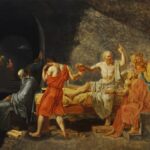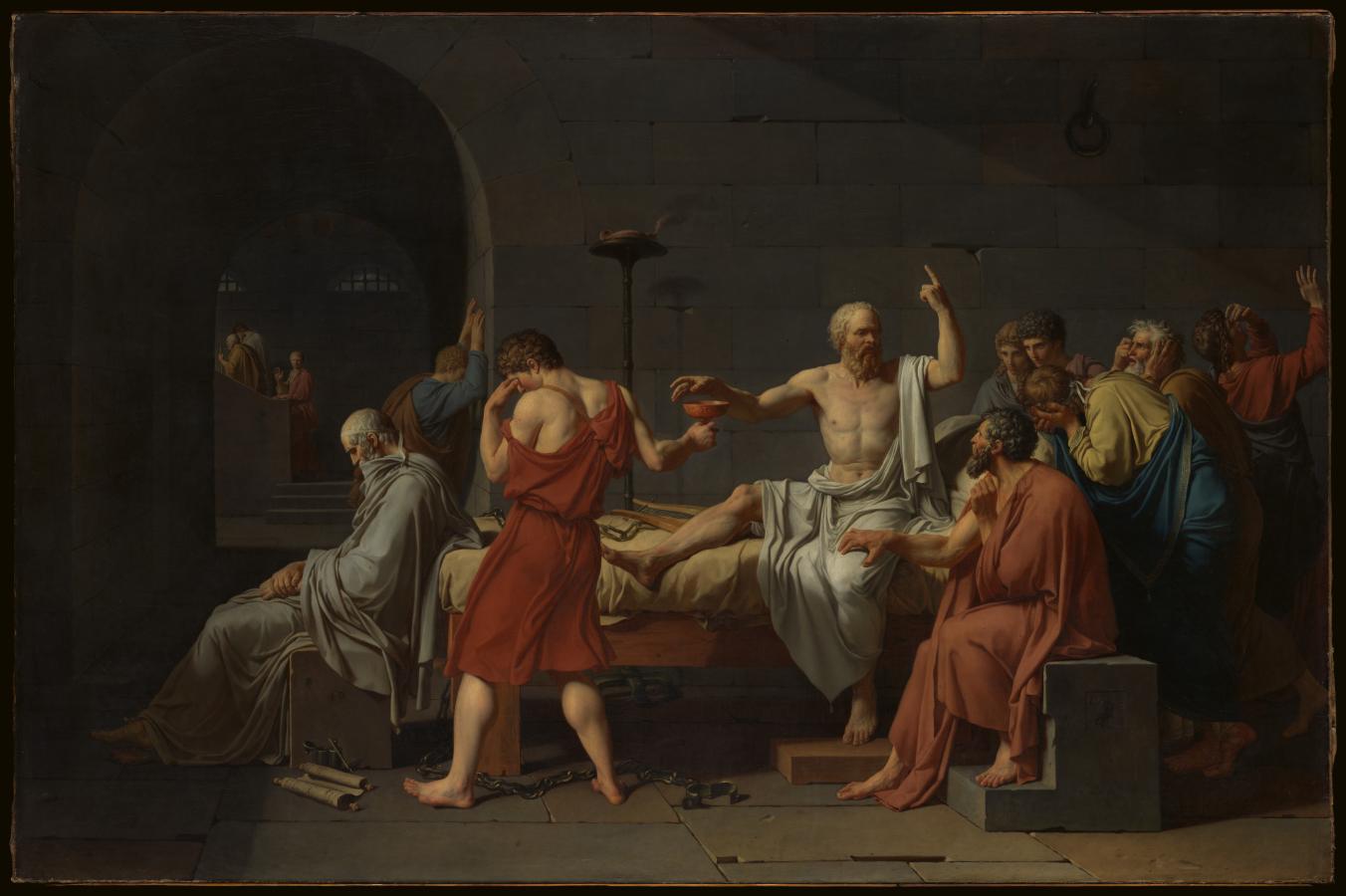David, Jacques-Louis (1748-1825)
La mort de Socrate (The Death of Socrates)
1787
Oil on canvas, 129.5 x 196.2 cm
Metropolitan Museum of Art, New York
In this landmark of Neoclassical painting from the years immediately preceding the French Revolution, David took up a classical story of resisting unjust authority in a sparse, friezelike composition. The Greek philosopher Socrates (469–399 BCE) was convicted of impiety by the Athenian courts; rather than renounce his beliefs, he died willingly, expounding on the immortality of the soul before drinking poisonous hemlock. Through a network of carefully articulated gestures and expressions, David’s figures act out the last moments of Socrates’s life. He is about to grasp the cup of hemlock, offered by a disciple who cannot bear to witness the act. David consulted antiquarian scholars in his pursuit of an archeologically exacting image, including details of furniture and clothing; his inclusion of Plato at the foot of the bed, however, deliberately references not someone present at Socrates’s death but, rather, the author whose text, Phaedo, had preserved this ancient story into modern times. (MET)
Compare:
 David, Jacques-Louis (1748-1825) & Studio
David, Jacques-Louis (1748-1825) & Studio
La mort de Socrate
after 1787
Princeton University Art Museum, Princeton
See also:
• Socrates (469 BC-399 BC)
